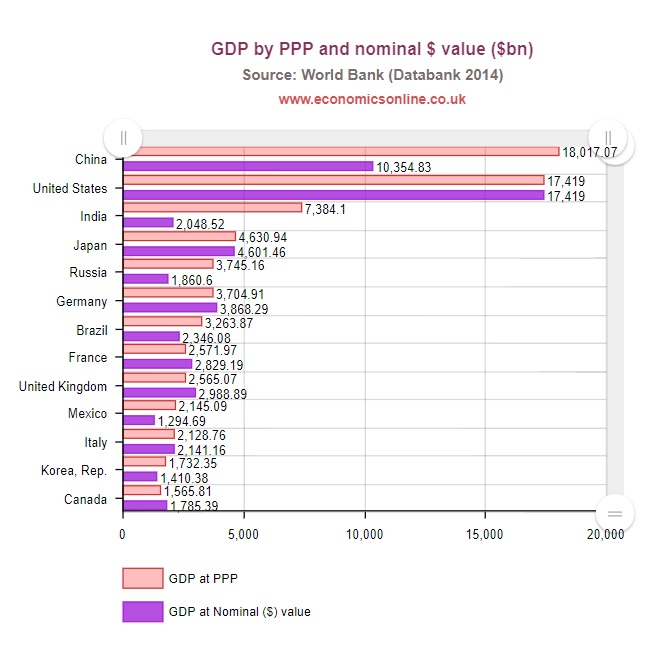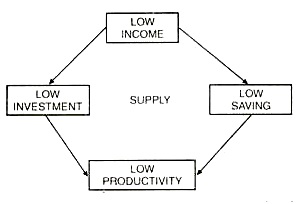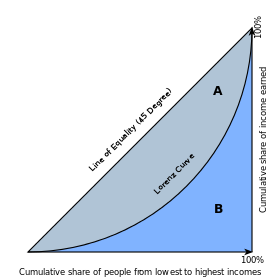वापस जायें / Back
Indian Economy - General
An economic system is a system of production, resource allocation, consumption and distribution of goods and services
Capitalism is an economic system in which the means of production are privately owned and operated for profit, in competitive markets. This system exists in most countries of the world. Under this system, the means for producing and distributing goods (the land, factories, technology, transport system etc) are owned by a small minority of people. We refer to this group of people as the capitalist class. The majority of people must sell their ability to work in return for a wage or salary (who we refer to as the working class.)
Benefits of Capitalism –
- Capitalism actively rewards positive traits like hard work
- Similarly, it punishes negative traits such as laziness.
- Provides Choice to customers
- Provides opportunity to realize dreams and desires (Anybody can grow)
- Capitalist societies usually do not have large black markets
- Built on Choice of Individual.(Democratic in nature)
Major limitations/ Criticism -
- Governed by Self Interest – fall in ethics.
- Markets are never truly free.
- Accumulation of wealth
- Encourages inequality in a society
- Business lobbying with government (Crony capitalism)
- Monopolistic tendencies
- Exploitation of workers
Socialism is an economic system of collective ownership and democratic control of means of production. Common ownership in most cases does not mean that decisions are made collectively. Individuals in positions of authority make decisions in the name of the group. Primary goal of socialism is social equality and an economic arrangement that would serve the interests of society as a whole.
Benefits of Socialism -
- Better salaries
- Stable work environment
- Eliminates exploitation and poverty
- Equality in distribution of wealth
- Opportunity for citizens to explore non-economically-productive pursuits
Criticism of Socialism -
- Distorted prices
- No incentive for better performance
- No choice of individual - Suppression of economic democracy
- Inefficiencies
- May become dictatorial
Mixed Economy – Is an economic system in which Private corporate enterprises and public sector enterprises coexist. Market mechanism is supplemented by partial planning. This system overcomes the disadvantages of both the market and planned economic systems. Core sector and strategic sectors are usually in the public sector. Government intervenes to prevent undue concentration of economic power, and monopolistic and restrictive trade practices. Rights of the individual are respected and protected subject only to the requirements of public order and morality.
Advantages –
- Producers and consumer have choice which is subject to minimal controls by the Government.
- Has less income inequality as compared to market economy.
- Balance between individual initiative and social goals.
World Bank Classification - It is based on Per Capita Gross National Income-
- Low income Economies – Per Capital Gross National Income less than 1005 US dollars.
- Lower Middle Income - Per Capital Gross National Income 1006 to 3955 US dollars.
- Upper Middle Income - Per Capital Gross National Income 3956 to 12235 US dollars.
- High Income Economies - Per Capital Gross National Income more than 12236 US dollars.
India is in the Lower Middle Income Group.
The size of Indian Economy is 7th larges in the world according to GDP and 3rd largest in the world on the basis of Purchasing Power Parity.
Purchasing power parity
When making comparisons between countries which use different currencies it is necessary to convert values, such as national income (GDP), to a common currency.
This can be done it two ways:
- Market exchange rates
Using market exchange rates creates two main difficulties:
Firstly, market exchange rates can quickly change, which artificially changes the value of the variable in question, such as GDP. For example, a one-month appreciation of the US' by 5% against the Japanese Yen would reduce the dollar value of the Japanese economy by 5%. Clearly, this is more to do with changes in the exchange rate than changes in the underlying state of the Japanese economy.
Secondly, market exchange rates are determined by demand and supply of currencies, which reflect changes in imports and exports of traded goods and services. However, not all countries trade the same proportion of their income and output, so currency values are not determined on a consistent basis.
- Purchasing power parity
The alternative to using market exchange rates is to use purchasing power parities (PPPs). The purchasing power of a currency refers to the quantity of the currency needed to purchase a given unit of a good, or common basket of goods and services. Purchasing power is clearly determined by the relative cost of living and inflation rates in different countries. Purchasing power parity means equalising the purchasing power of two currencies by taking into account these cost of living and inflation differences.
For example, if we convert GDP in Japan to US dollars using market exchange rates, relative purchasing power is not taken into account, and the validity of the comparison is weakened. By adjusting rates to take into account local purchasing power differences, known as PPP adjusted exchange rates, international comparisons are more valid.
PPPs and market exchange rates compared
The World Bank produces a report every three years comparing countries in terms of PPPs and US'. As can be seen, when PPPs are used, the gap between the richer and poorer countries is considerably narrowed.

Here is a simple video -
Purchasing Power Parity is affected by Tariffs, Transportation cost and Non-Tariff Trade Barriers. Thus Taxes can be different in different countries, or transportation cost of goods may be different or there can even be other barriers like prohibition of sales of goods by law. Thus even with equal exchange rates purchasing power my be different in different countries.
India is an underdeveloped (developing) economy
India is considered underdeveloped economy because of –
- Low per capita income
- Inequality in distribution of income and wealth
- Agriculture is the main economic activity
- High population growth with high dependency ratio (large number of non-workers – children and old people depend on small number of workers)
- Low level of investment
- Unemployment
- Poverty
- Imperfections of market
- Lack of infrastructure
- Low levels of technology
Vicious circle of Poverty – Regner Nurksey has said that the main reason of poverty is lack of capital formation. There are low savings due to poverty which lead to low investment. Low investment causes low productivity which increases poverty. This is called vicious circle of poverty.

Lorenz Curve
This is a graph to measure inequality in a country. Percentage of households is plotted on the X-axis and percentage of the share of income on the Y-axis.

Human Development Report
This is a measure of comparison of human development in different countries. Human development index is calculated for this purpose. Pakistani economist Mahboob-ul-haq has contributed to the development of this indicator. Three indicators are given equal weight to calculate Human Development Index. These are Per capita real income, Literacy rate and life expectancy at birth. According to the Human Development Report published by UNDP in the year 2016 India is in the Low medium human development category. India is at 131st place in the world and lowest among the BRICS countries. Central African Republic is last being at 188th place. Among the neighbors of India, Srilanka is at 73rd place, China at 90th place, Bhutan at 132nd place, Bangla Desh at 139th place, Nepal a 144th place, Pakistan at 147th place and Afganistan at 169th place. Human Development Index of India is 0.624. In India this report is brought out by National Council of Applied Economic Research (NCAER). It was released for India for the first time in 2001. Madhya Pradesh was the first state to publish it at the sate level. At present Keral is first in Indian states and Chhattisgarh at 23rd place is the last.